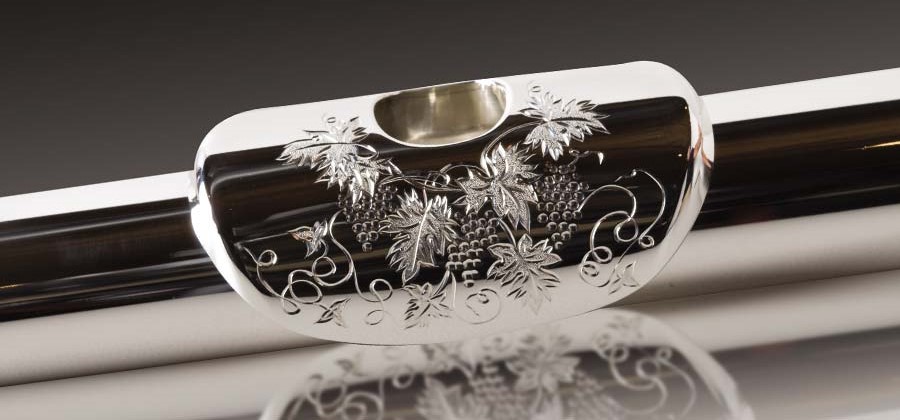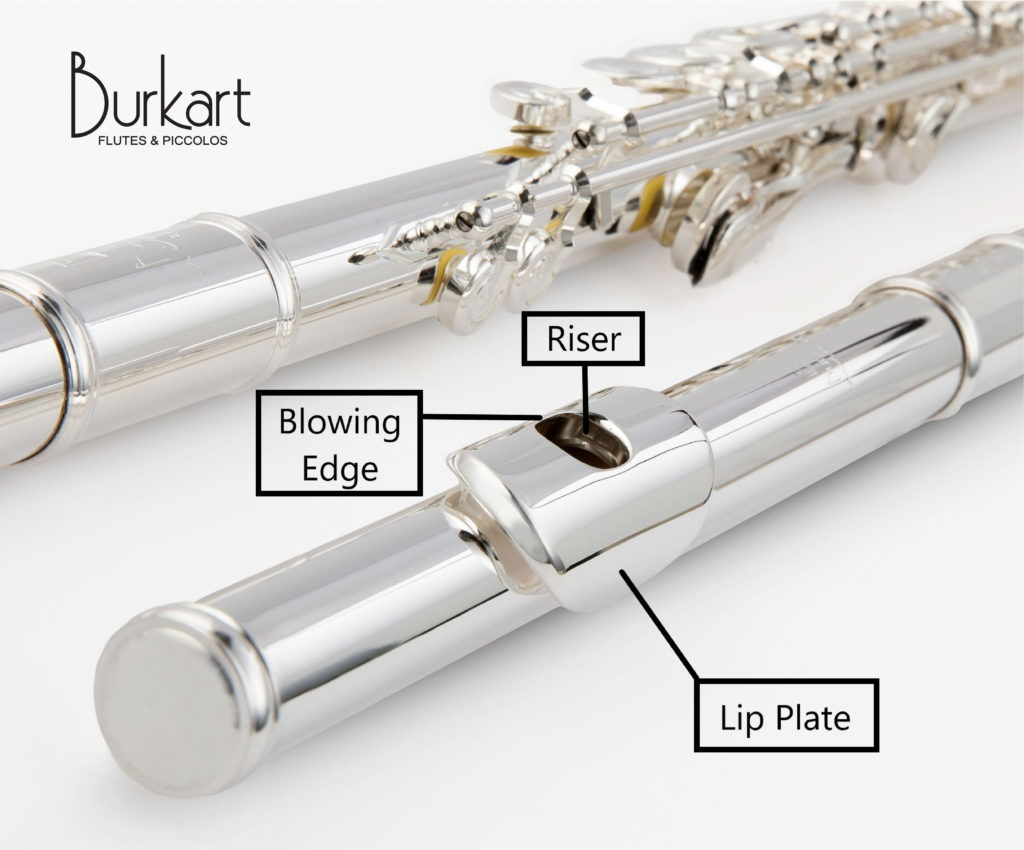In our last blog, we learned how the shapes and characteristics of the embouchure impact color, response, and nuance in the sound of a flute headjoint. We also discussed the characteristics of a headjoint that may be most important for a student flutist and a professional flutist. Armed with your quick list of qualities that you desire in your flute headjoint, you can now shift your attention to finding the material, or combinations of materials, that will serve you best.
Choosing the right material is essential to find your ideal sound and feel for a flute headjoint. When it comes to material, sound is most influenced by density and stiffness.
How Material Density and Stiffness Affect the Flute Headjoint
Density and stiffness are inherent properties of any material. Density refers to the amount matter in a given space. A material with a large amount of matter in a space is said to have high density, while a material with less material in the same amount of space is said to have low density. Simply put, density refers to the amount of stuff in stuff.
Stiffness in a metal can be defined as the tendency of a material to resist being compressed. Imagine applying pressure to all sides of a piece of material; The amount that the metal compresses or does not compress has to do with stiffness. By taking advantage of these characteristics, flutists can fine-tune their instrument by selecting the materials that will enhance their own unique style.
Fortunately for flutists, headjoint makers have spent decades determining the ideal materials, tube thicknesses, and manufacturing techniques to harness the ideal qualities of density and stiffness. When it comes to density and stiffness, simply remember that different metals have different inherent qualities, which will impact the sound and feel of a headjoint.
The Flute Headjoint Riser and Lip Plate
A flute headjoint embouchure has two components: the lip plate and riser. The material used to craft the lip plate or riser can be the same as the headjoint tube itself, or they can be made of a different material to impart different acoustical qualities to the sound. The flute’s sound originates in the headjoint; since the airstream first contacts the riser, many flutists will feel and hear a difference depending on the type of material from which the riser is made.
Sterling Silver is a silver alloy containing 92.5% pure silver combined with other metals for structural and sonic integrity. The most common material for flute headjoints, sterling silver creates a sound with classic brilliance. Silver has the ability to produce a balanced sound with projection and shimmer.
Gold is perceived by many to “darken” the sound and add a profound color palate at a relatively affordable price. Since gold is a denser material than silver, a gold riser on any kind of silver head will add color and nuance.
With both a gold lip plate and riser, the gold embouchure creates additional benefits over a gold riser alone. A gold embouchure supplies gold at the exact tip of the blowing edge, while the added weight of a gold lip plate adds substance to the sound with rich aesthetic appeal.
For maximum density, platinum delivers stunning richness and depth. Platinum is widely known for its free-blowing fortes, but also its subtlety of color. The added projection and color are both striking and beneficial, and can be appreciated by orchestral players, soloists, and chamber musicians alike. Platinum can also facilitate upper octave pianissimos for the player.
Choosing Material Combinations for Your Flute Headjoint
By now you may be feeling a little overwhelmed about what to do with all this information— who knew something as simple as a headjoint could have so many intricacies. With a methodical approach and the right guidance on your side, choosing the right headjoint can be easy:
- Identify the qualities that matter most to you. Think about your personal strengths and weaknesses. Do you struggle with producing a full sound in the low register? Do you crave projection and ease when performing with your orchestra in a concert hall? Talk with your teacher to develop a list of the places you’ll play and the qualities that you want to improve or enhance in your playing.
- Work with a specialist. Investing in a new headjoint allows you to reimagine the sound and feel of your current flute body, but with so many factors to consider, the guidance of an expert is a necessity to ensure that your new headjoint compliments your own unique style of playing and elevates the qualities that you enjoy in your flute.
- Get hands-on. Education is critical preparation for selecting the right headjoint, but it’s no substitute for hands-on experience. Once you’ve identified the characteristics you want and worked with a specialist, it’s time to get your fingers on the keys and try out the headjoint yourself! The best way to be certain that your new headjoint is a perfect match is to hear how it sounds when you play.
As your skills as a flutist develop and you grow as a player, it becomes increasingly important to have a flute that is tailored to elevate your musicality and artistry. Customizing a headjoint is an excellent way to take the next step on your personal musical journey.
Get a personalized, one-on-one consultation with our specialists today and learn how a Burkart headjoint can unlock the beauty, ease, and response you’ve been searching for!


